Photos: Fiery Lava from Kilauea Volcano Erupts on Hawaii's Big Island
Lava channel
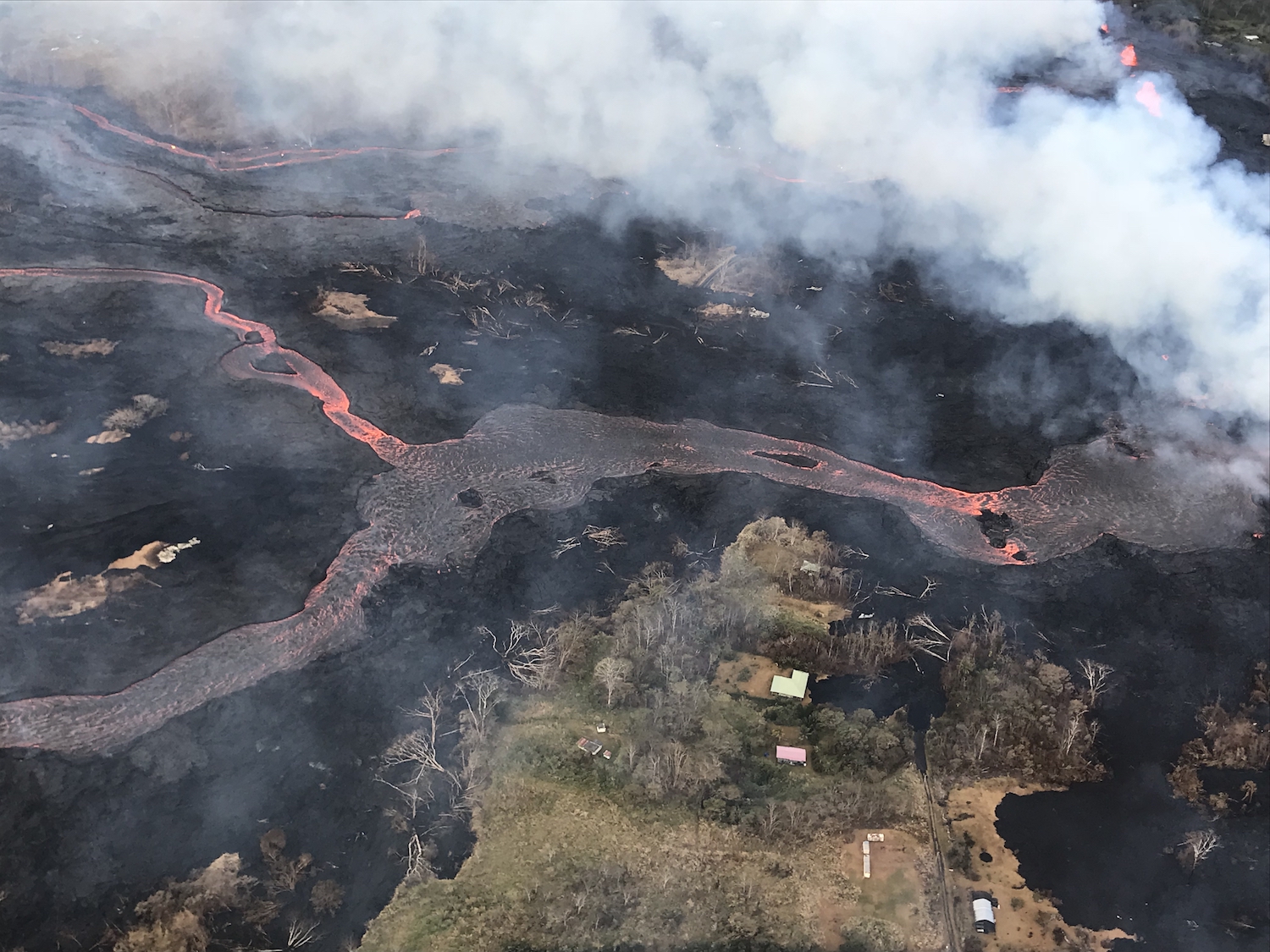
Geologists have had their eye on Kilauea volcano, on Hawaii's Big Island, since March 2018. That's when the Pu'u 'Ō'ō vent began to inflate in size as magma welled up underneath it. Then, in late April, that magma moved southeast of Pu'u 'Ō'ō, erupting in a residential neighborhood.
In this photo, a lava flow emerges from Fissure 22 on May 23. Notice how the lava is flowing downhill, from right to left.
[Read complete coverage of the Kilauea Volcano eruption]
Blue Flame
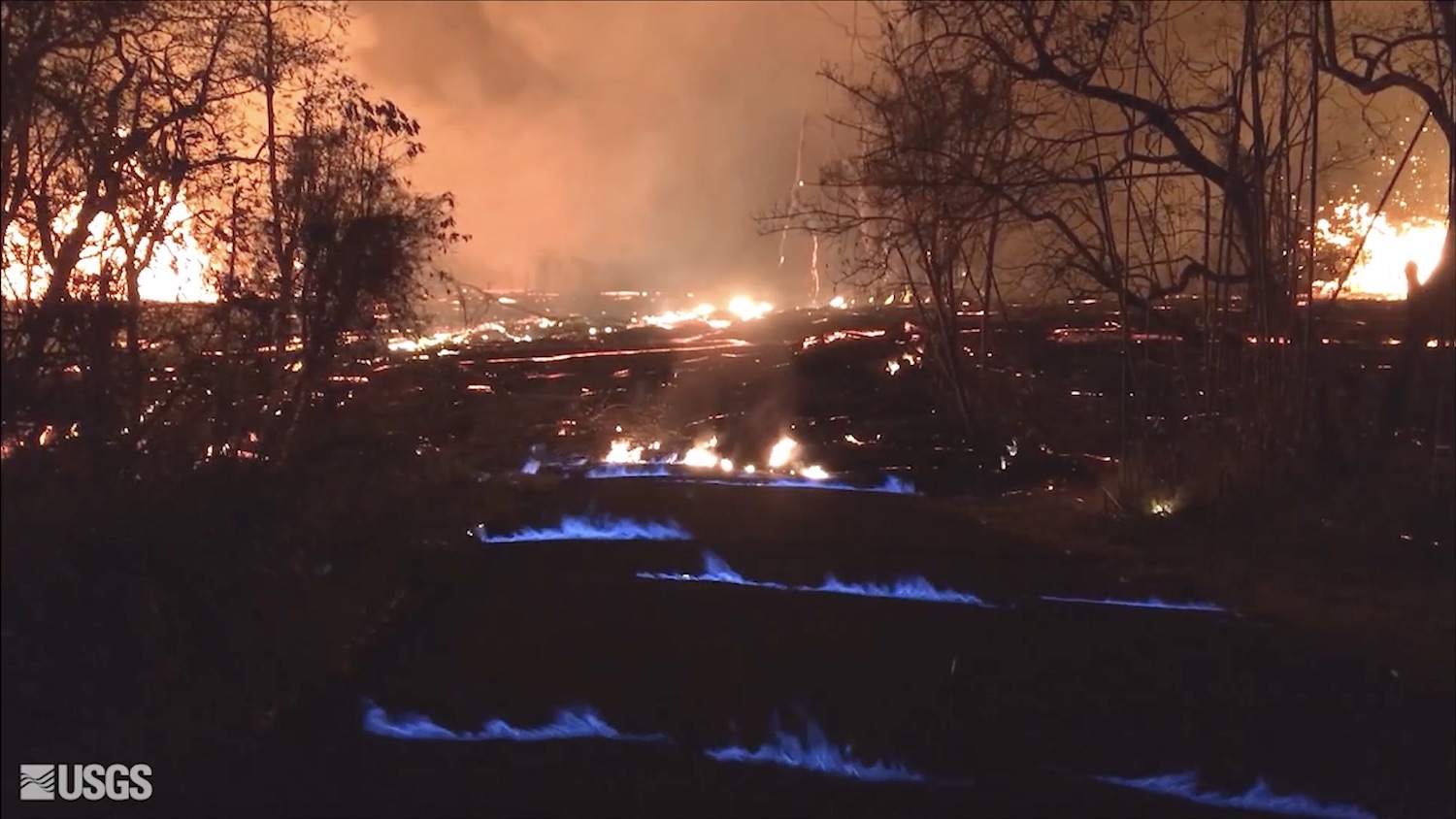
Spooky blue flames burned in Leilani Estates the night of May 22, as lava scorched plants, which in turn produced methane, a colorless gas that burns blue.
[Read more about the blue flames here]
Solidified lava
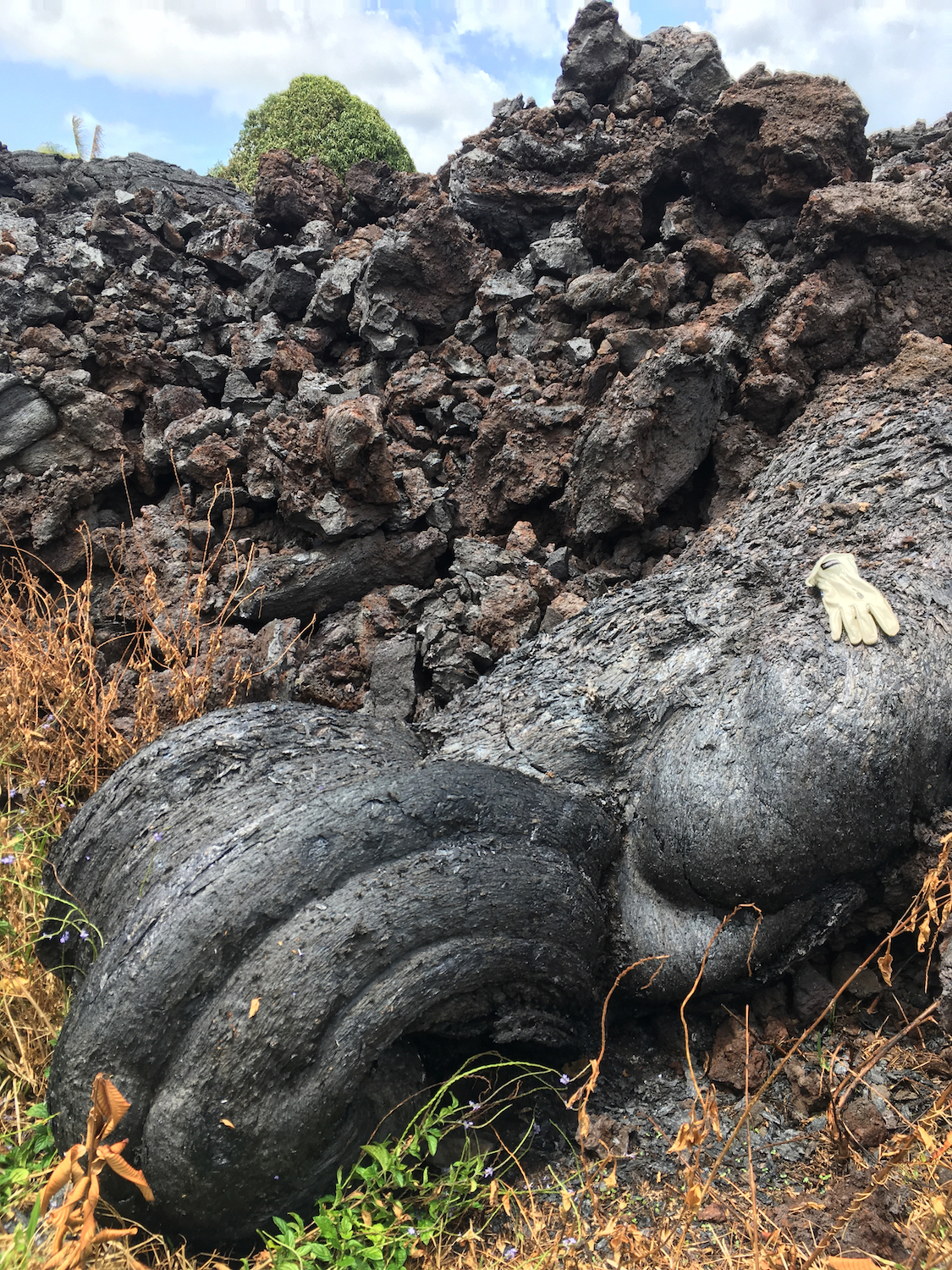
A chunk of solidified lava from Fissure 17, photographed on May 22. The chunk has the consistency of toothpaste, according to the Hawaiian Volcano Observatory.
Lava fountains
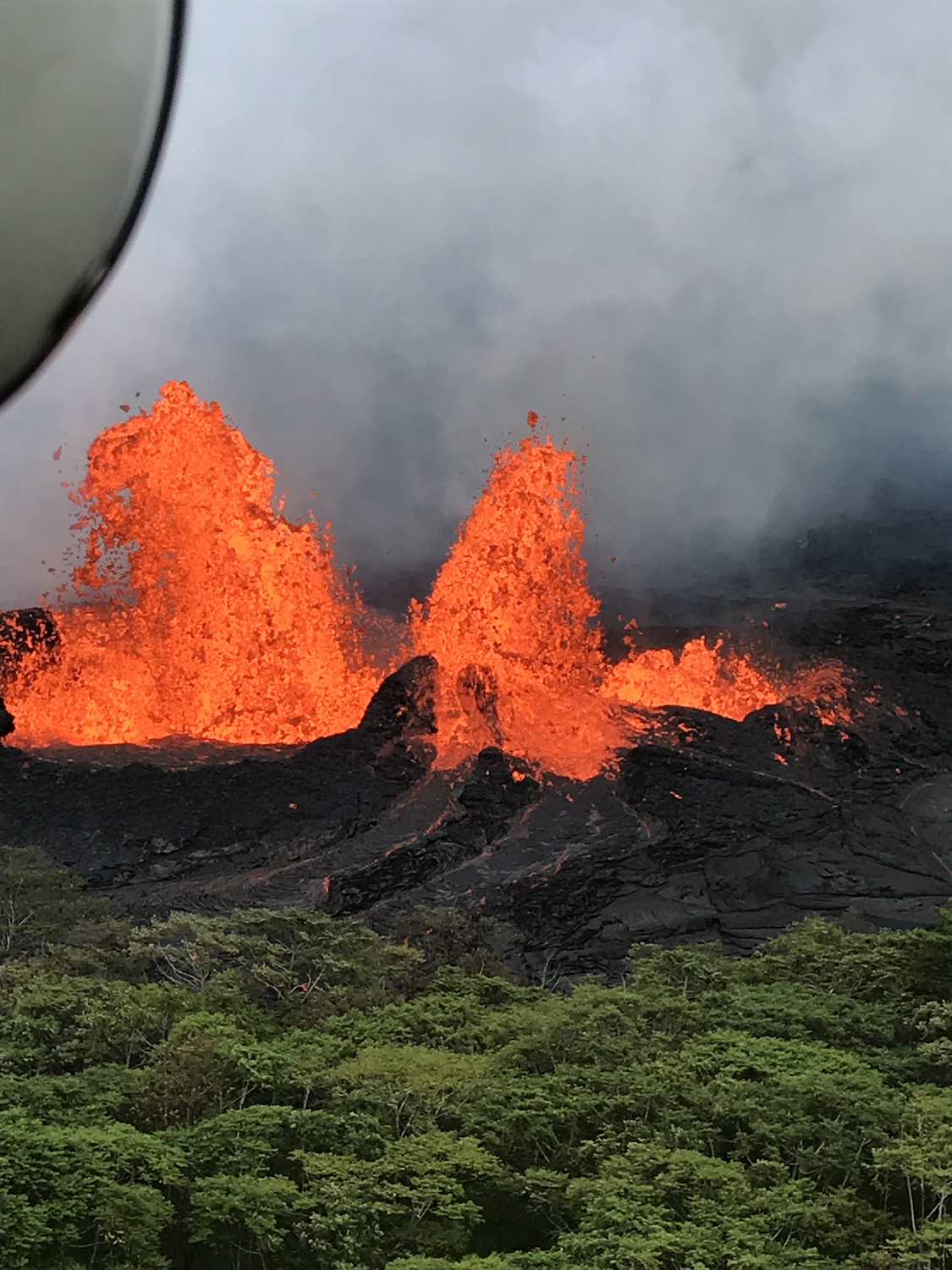
Lava fountaining at Fissure 22 on May 21.
One entry point
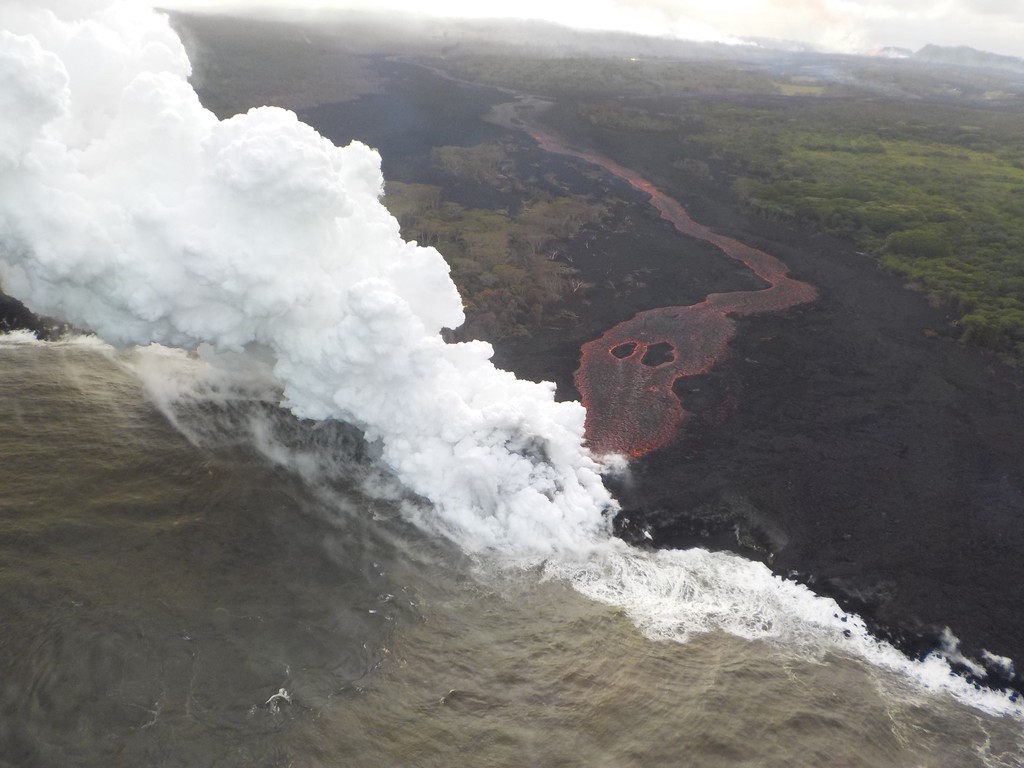
By the end of May 21, just a single ocean entry — from Fissure 22 — was active.
Ocean entry
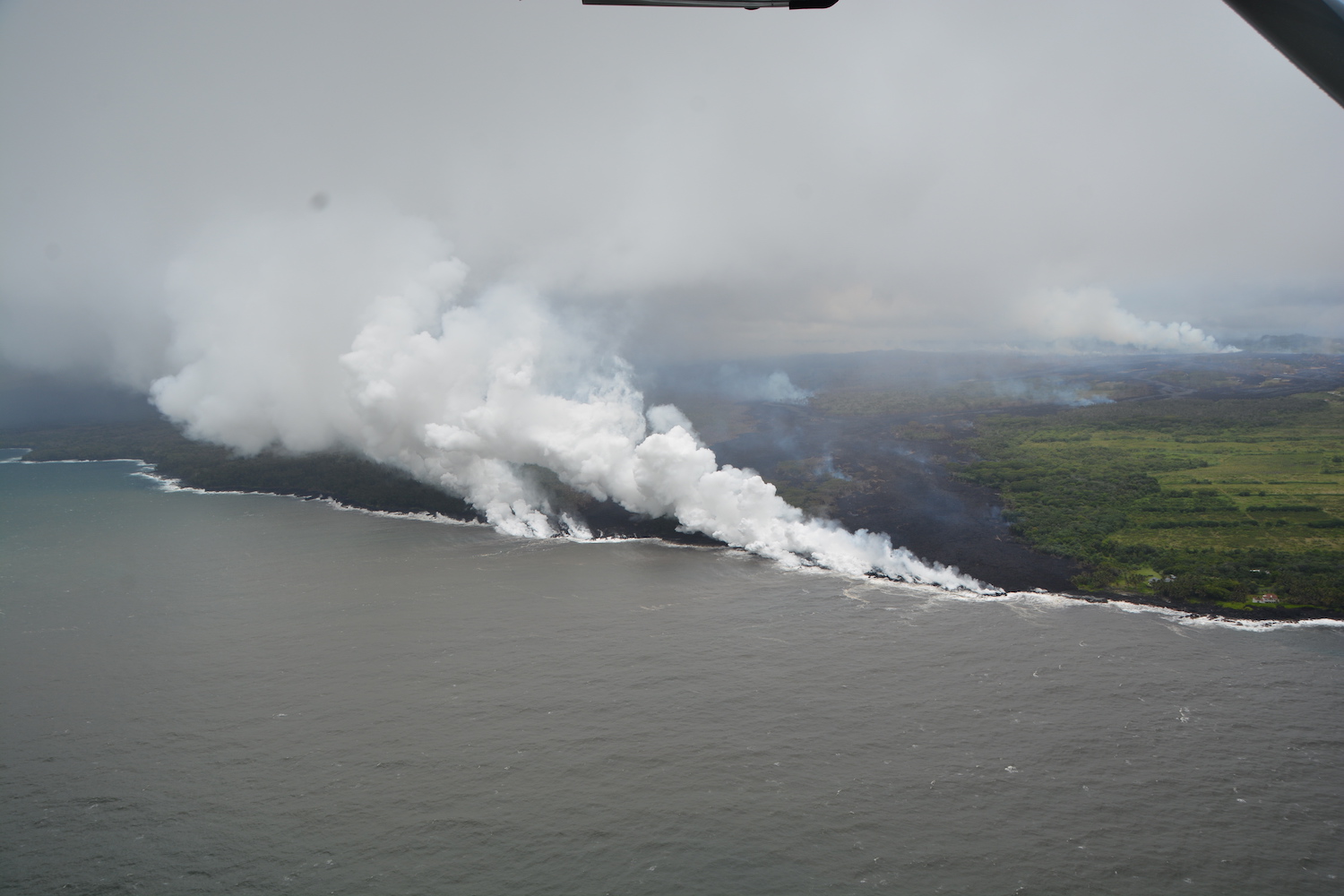
The Civil Air Patrol snapped this photo May 20 as lava entered the Pacific Ocean at two different points.
Laze plume
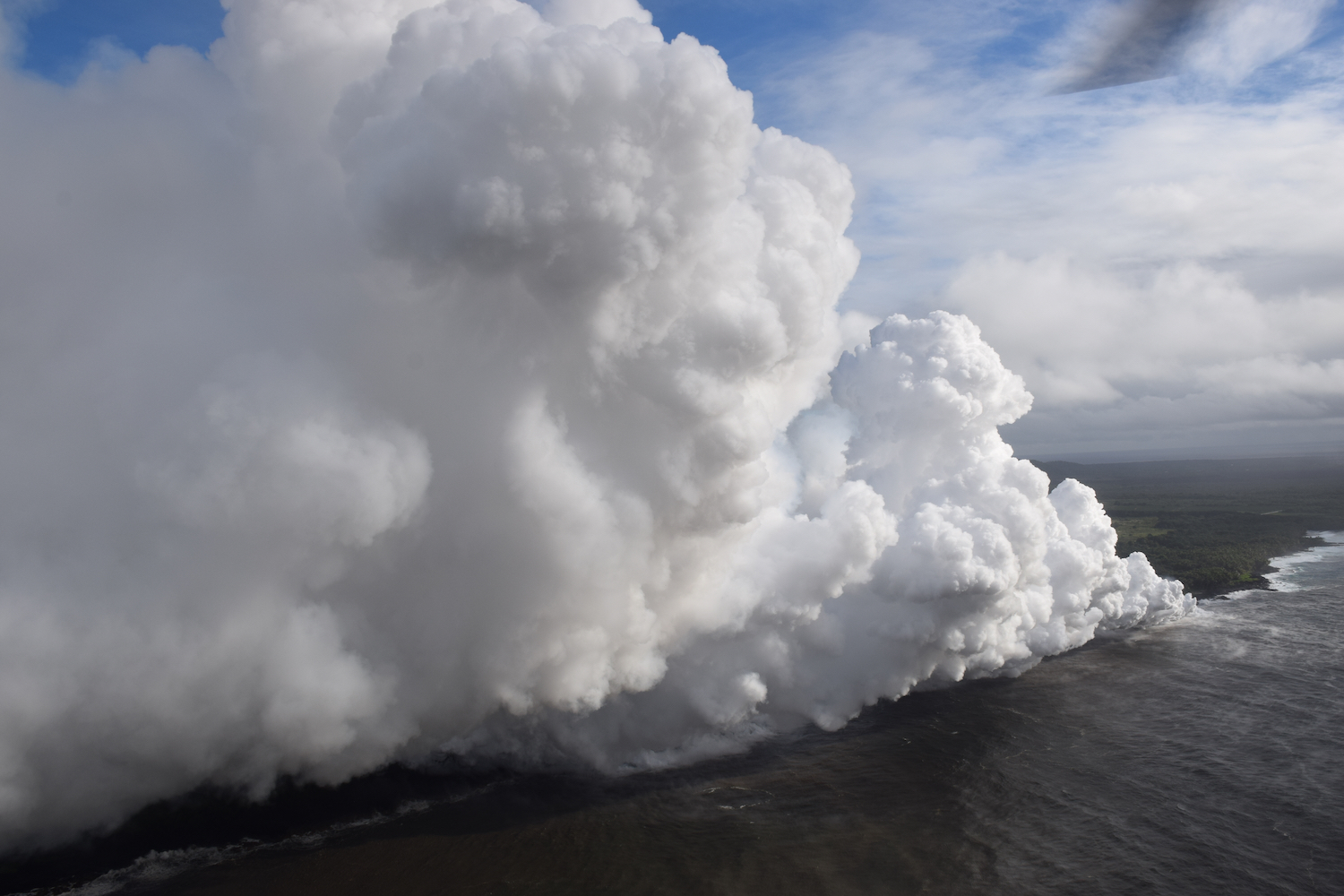
Lava from Fissure 20 reached the ocean late in the evening on May 19. When lava and ocean meet, a white "laze" plume of hydrochloric acid, steam and fine glass particles is created. This laze plume can be hazardous to people nearby and downwind.
Get the world’s most fascinating discoveries delivered straight to your inbox.
Lava river
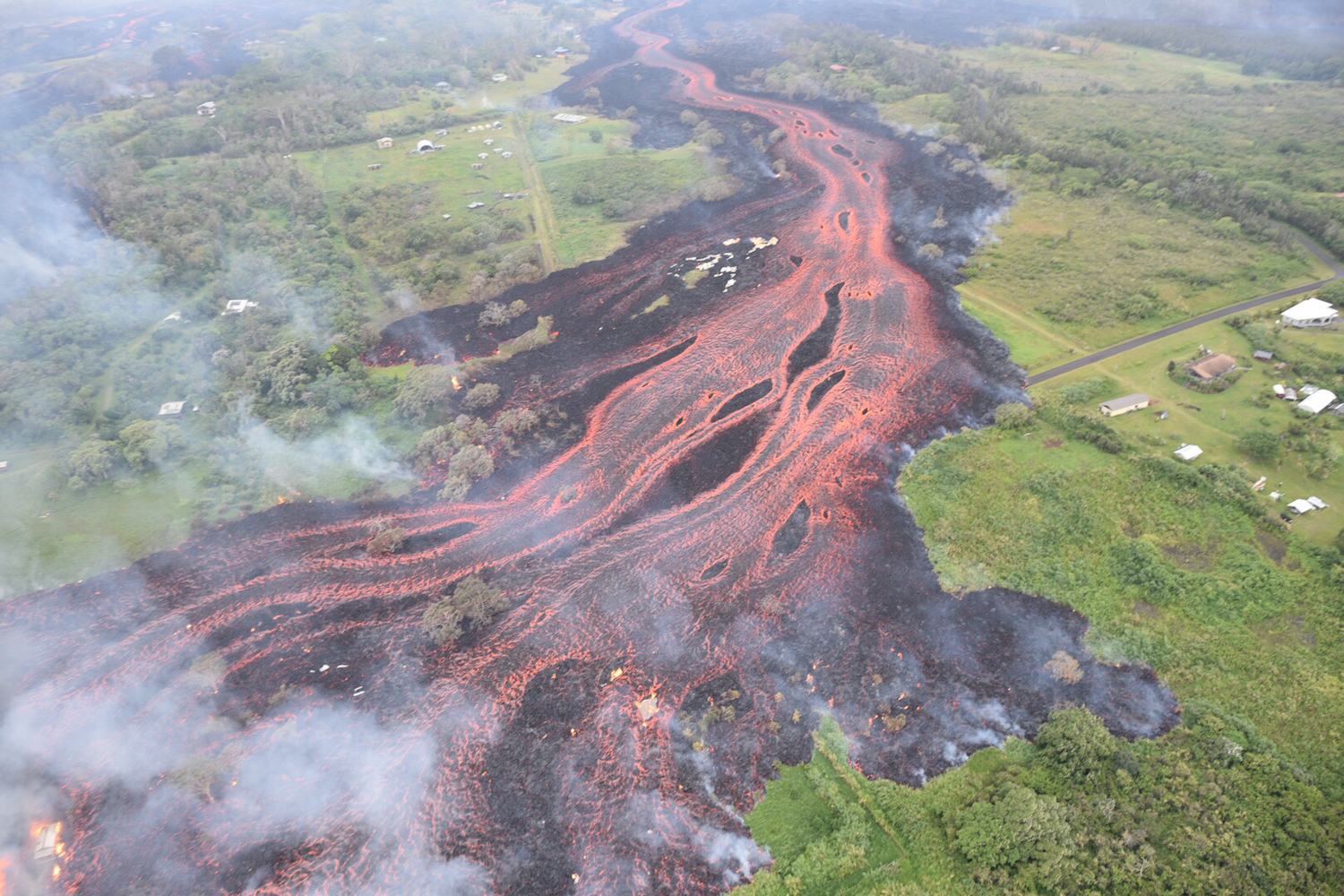
A helicopter flight on May 19 shows lava from fissures 16-20 forming channels. The lava channel is flowing from the upper center to the lower left of the photo.
Ocean ahoy
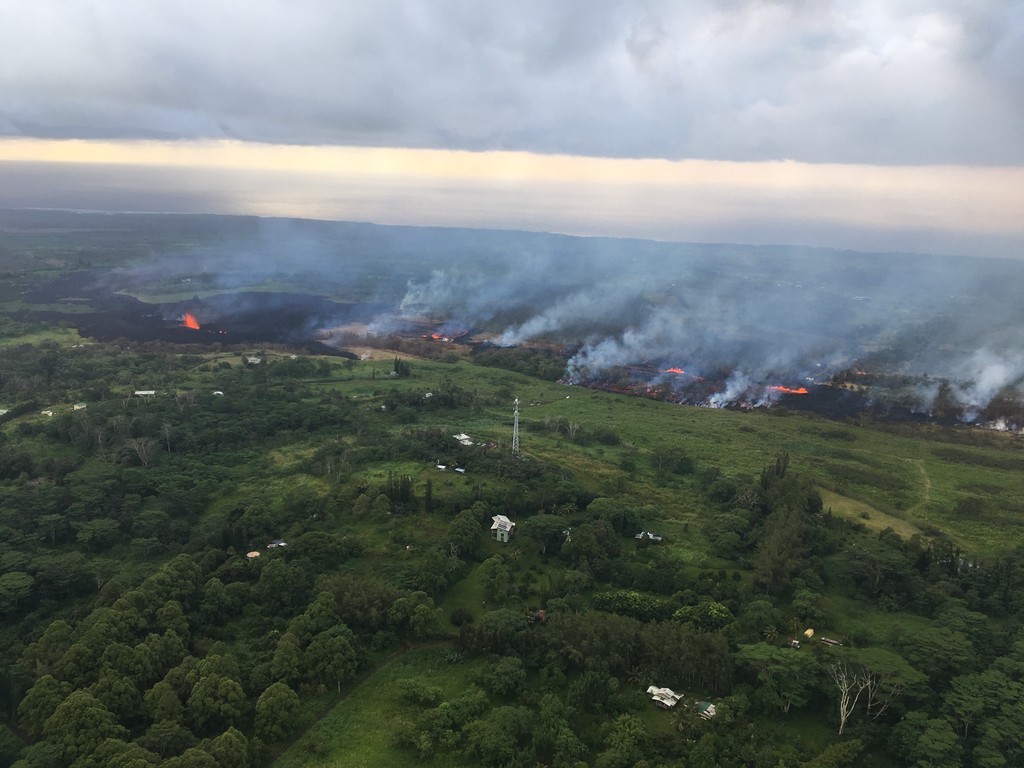
An early flight the morning of May 18 allowed photographers to capture the lower, very active part of the fissure system. Notice the ocean in the distance.
[Read complete coverage of the Kilauea Volcano eruption]
Smoky lava
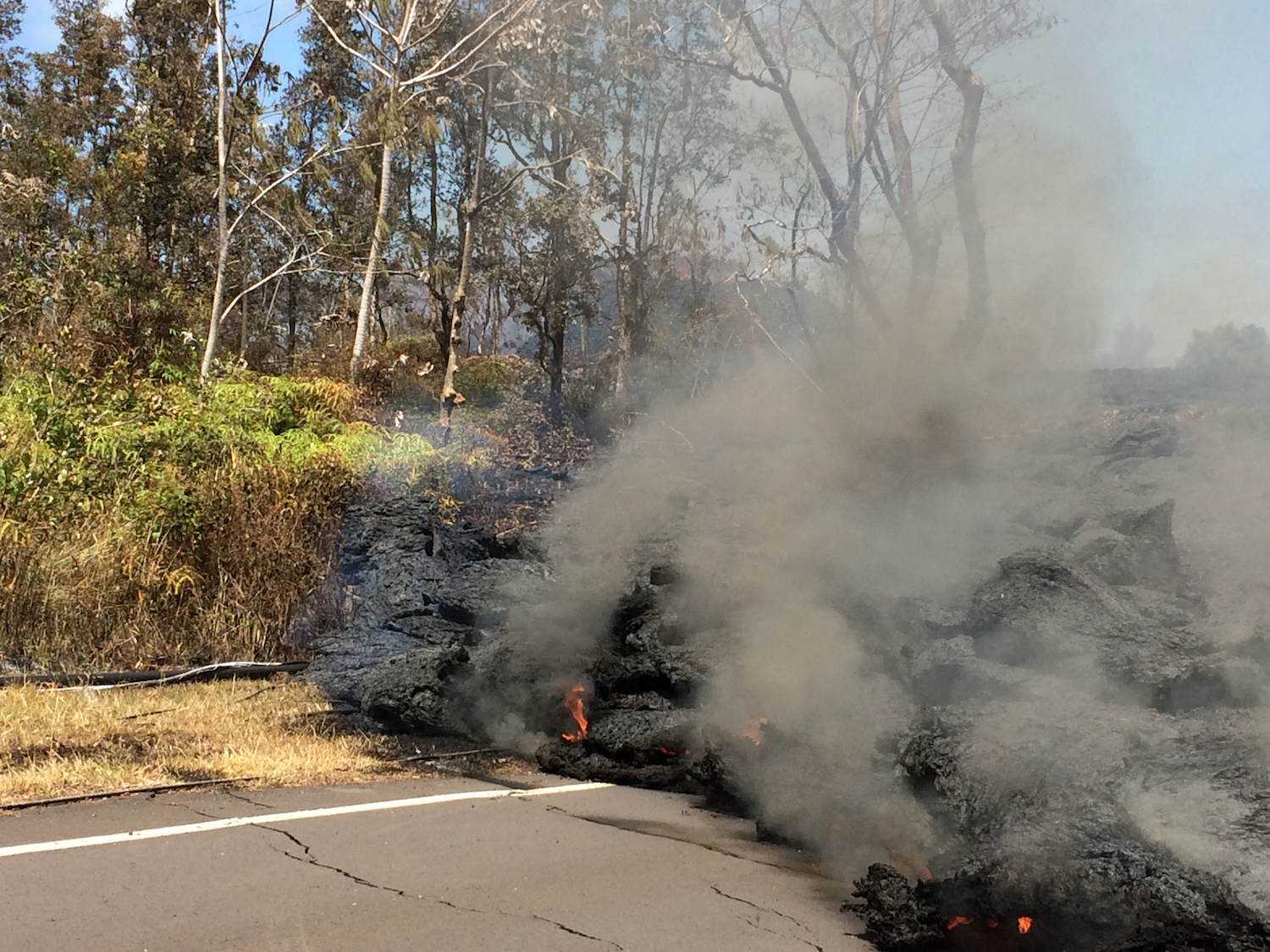
Lava from Fissure 15 smokes on Pohoiki Road on May 18.
Very meta
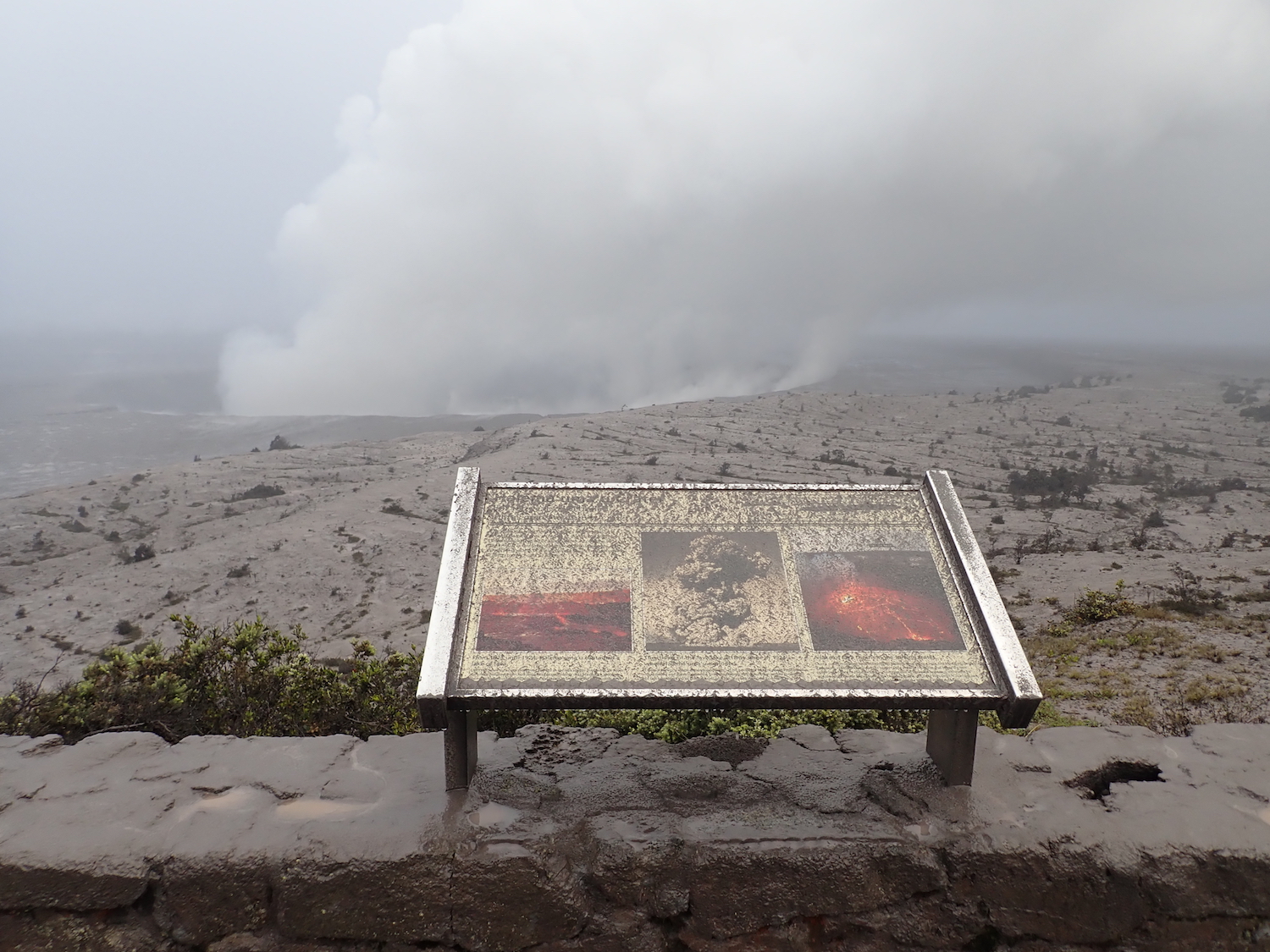
Ash covers a visitor sign at the Halema'uma'u crater on May 17. Compare the black-and-white plume on the sign, from May 1924, to the plume in the background.

Laura is the managing editor at Live Science. She also runs the archaeology section and the Life's Little Mysteries series. Her work has appeared in The New York Times, Scholastic, Popular Science and Spectrum, a site on autism research. She has won multiple awards from the Society of Professional Journalists and the Washington Newspaper Publishers Association for her reporting at a weekly newspaper near Seattle. Laura holds a bachelor's degree in English literature and psychology from Washington University in St. Louis and a master's degree in science writing from NYU.


